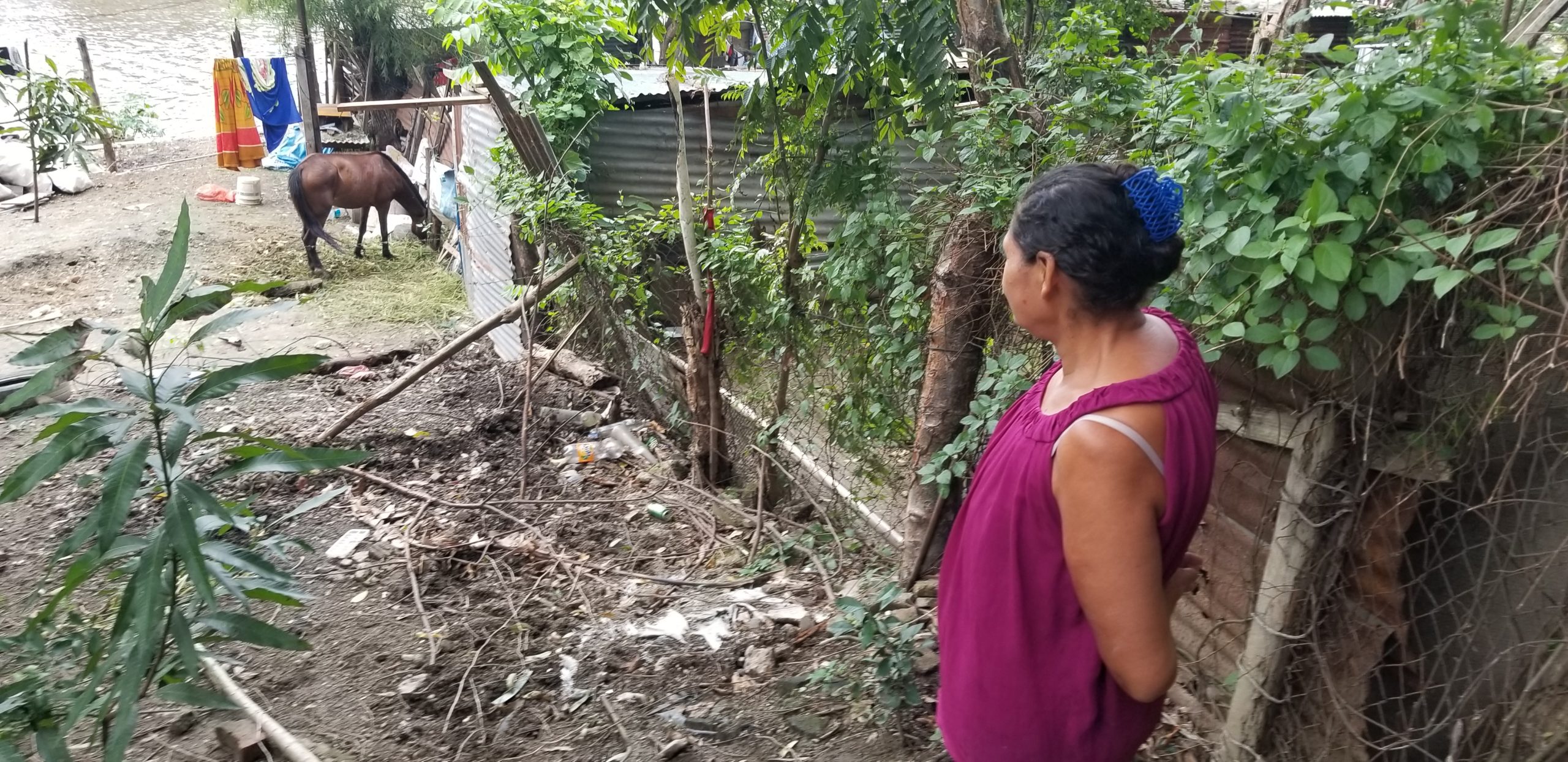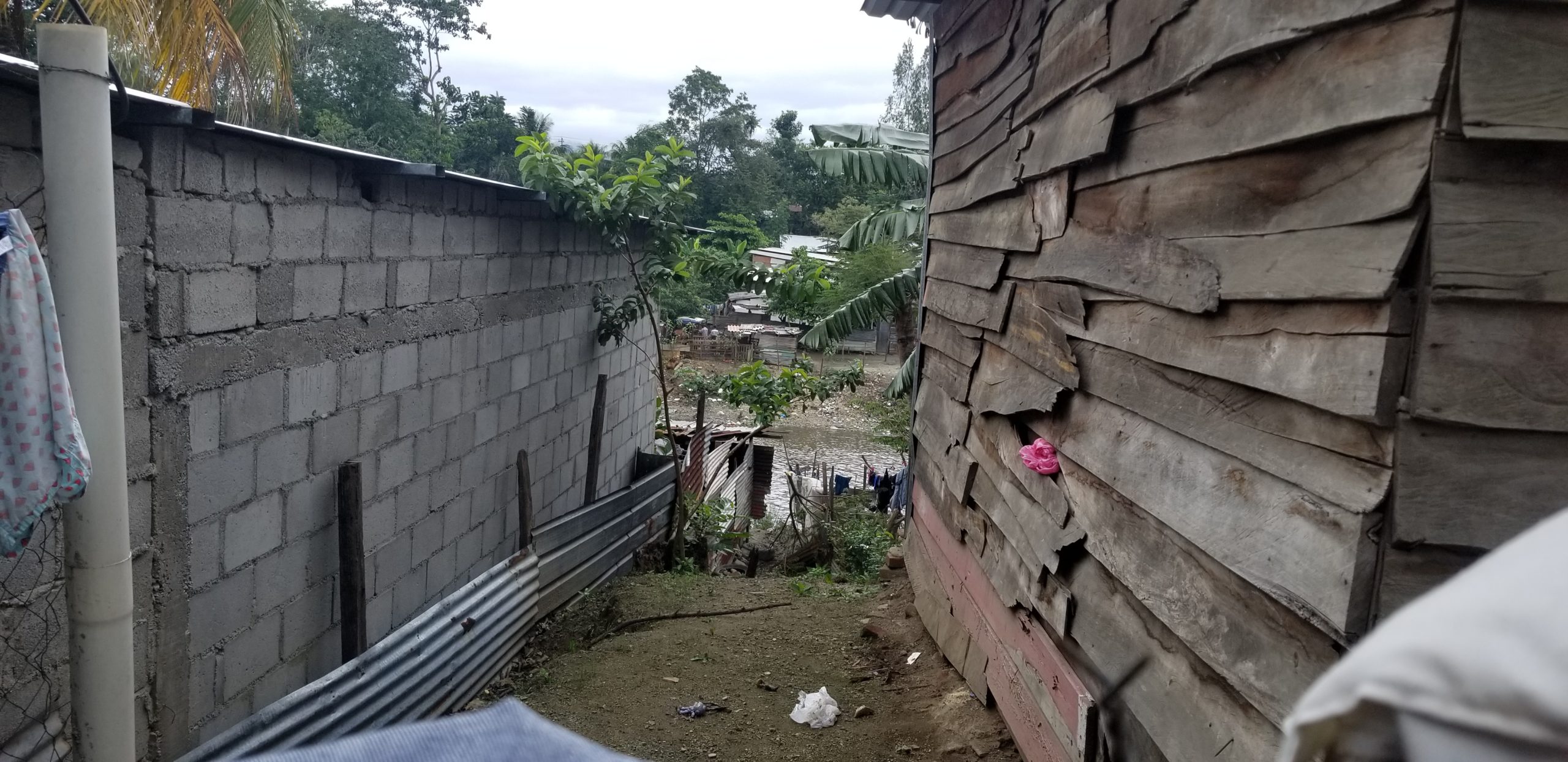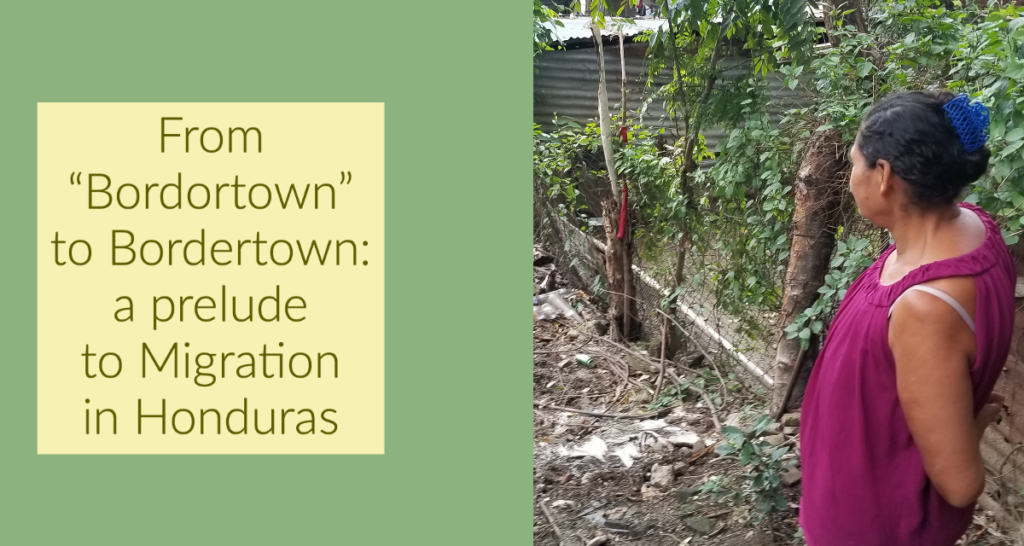From “Bordortown” to Bordertown: a prelude to Migration in Honduras
Claudia looked at the river from a particular, personal point of view. She moved from the countryside, looking for better opportunities for her and her family of six people. Droughts and adverse conditions forced her and her family to move near the river into a provisional lodging, where she could work to get a job and have enough money to settle into the urban neighborhood of San Pedro Sula, Honduras. Now she has lived there for almost 30 years. Her options are to stay near that small neighborhood river, the “Río de Piedras,” or to take the roads into the Guatemalan border as a migrant.
 “Bordos” are river towns, like cities inside the city of San Pedro Sula,” explained Enoc Murillo, a lawyer and staff person working with the Mennonite Social Action Committee (CASM), a partner of Global Ministries in Honduras. “In this place, Hondurans have taken these lands next to the river, since the country’s legislation stipulates that such lands cannot be disposed of or be privately owned.” Enoc continued giving me detail on how they build their housing there. “Once they manage to settle on the river bank, they drive wooden sticks with barbed wire and mark their territory. Then, they plant banana trees to define their “property” and look for zinc, wood, and plastic awnings. With that, they build the typical mode of housing in this place: La Cobacha. Hundreds of cobachas border the river, housing people that came from the countryside as climate change, lack of economic opportunities, or violence forced them to move into this place near the city.
“Bordos” are river towns, like cities inside the city of San Pedro Sula,” explained Enoc Murillo, a lawyer and staff person working with the Mennonite Social Action Committee (CASM), a partner of Global Ministries in Honduras. “In this place, Hondurans have taken these lands next to the river, since the country’s legislation stipulates that such lands cannot be disposed of or be privately owned.” Enoc continued giving me detail on how they build their housing there. “Once they manage to settle on the river bank, they drive wooden sticks with barbed wire and mark their territory. Then, they plant banana trees to define their “property” and look for zinc, wood, and plastic awnings. With that, they build the typical mode of housing in this place: La Cobacha. Hundreds of cobachas border the river, housing people that came from the countryside as climate change, lack of economic opportunities, or violence forced them to move into this place near the city.
People living at the “bordos” confront health problems as well as pollution. The rum industry, clothing factories, and a tortilla flour plant use the river as a source of discharge for its waste. Along with that, the citizens of San Pedro Sula, as well as the inhabitants of the “bordos,” do the same, creating a whole parallel river of garbage that runs alongside the currents of its waters. Also, unemployment between the citizens of those river towns is high, as they lack of specific skills demanded by business in San Pedro Sula. And, as if this were not enough, violence tends to migrate along with the “bordortown people” and organized youth gangs (known as “maras”) are already present in those communities. Some “maras” control specific territories inside the neighborhoods and even decide who enters and who is forbidden at the river banks.
 CASM has collaborated in the organization of the “Bordos General Coordination,” an organization for solidarity and advocacy for the benefit of people in the “bordos.” Scholarships are obtained so that they study and manage to work in companies or start their own. That way, they can access another type of safer and more dignified housing. CASM also providing a seed capital that can be used for investments in their own small businesses.
CASM has collaborated in the organization of the “Bordos General Coordination,” an organization for solidarity and advocacy for the benefit of people in the “bordos.” Scholarships are obtained so that they study and manage to work in companies or start their own. That way, they can access another type of safer and more dignified housing. CASM also providing a seed capital that can be used for investments in their own small businesses.
As a collective, they aspire to be relocated to a decent place. They have talked with the local government and pushed for their struggle in the public arena. But, the authorities has been unresponsive to their specific demands. The Mayor’s office talks about development projects on the riverbank without even mentioning if the city will relocate the people living at the bordos. In the meantime, on this internal border, on this passageway between the countryside and the city, between the internal and external borders, right in the middle of migration as we know it, they continue resisting and hoping against hope.

